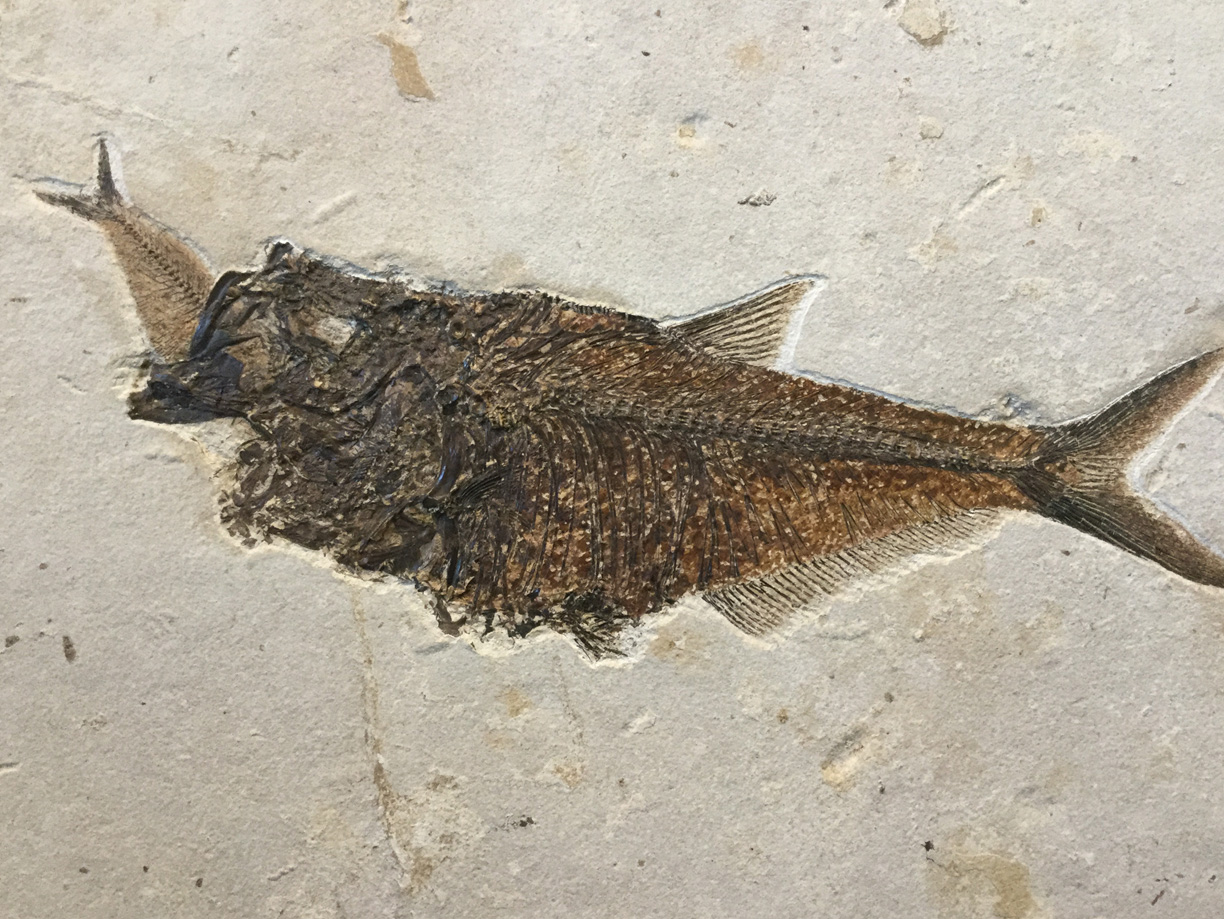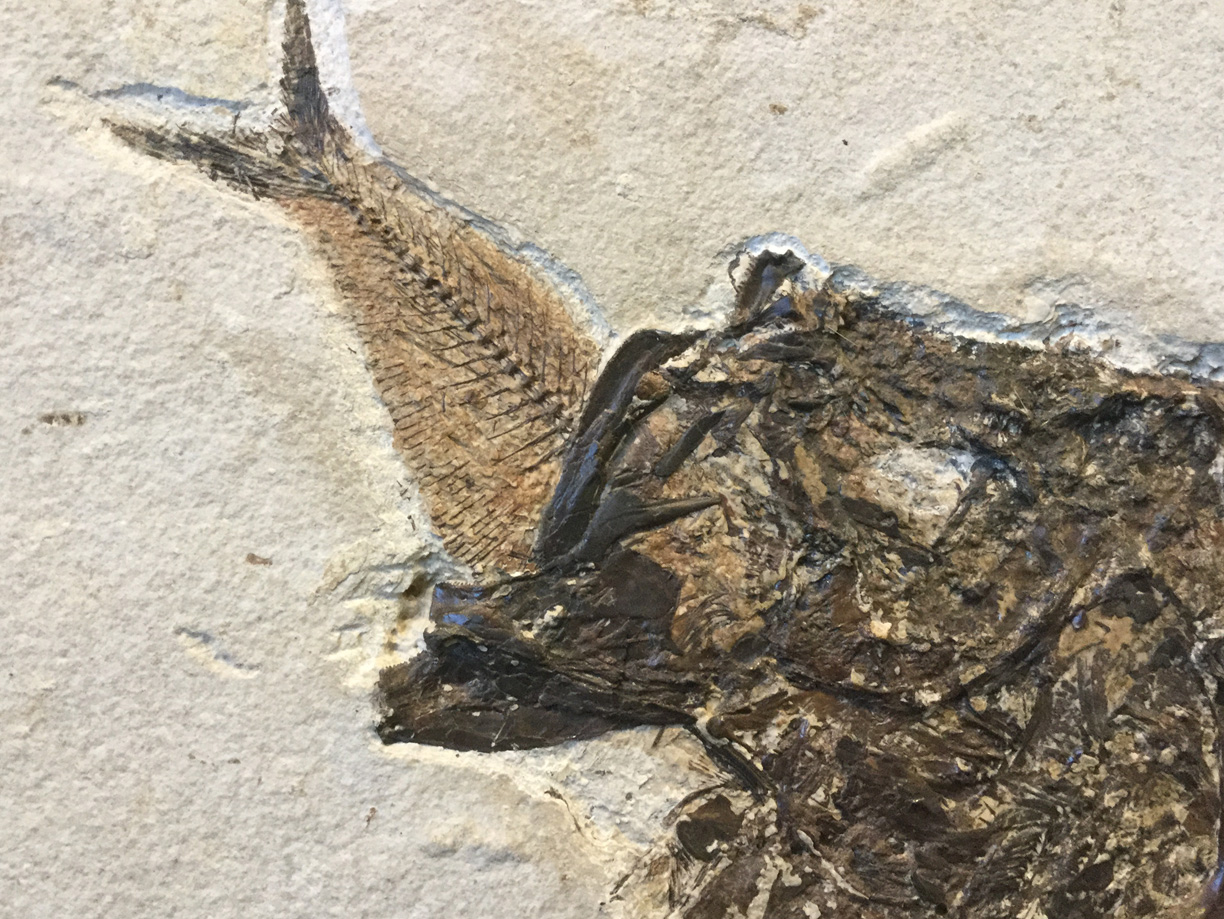
Eocene Green River Diplomystus Aspiration
Diplomystus dentatus aspiring Knightia alta
Green River Formation
Middle Eocene
Lincoln County, Wyoming
Green River Formation
Middle Eocene
Lincoln County, Wyoming
This is a remarkable example of a Green River Formation fossil fish aspiration specimen. The Diplomystus predator is 18 inches and is swallowing a 5.5 inch Knightia. Both fish are very well preserved and both skeletons are complete. Aspiration specimens are rare in the Green River Beds but offer a dramatic glimpse into the dynamic cycle of life in Fossil Lake. The overall dimension of the slab is 27 inches by 19 inches and has a mahogany frame.
Diplomystus is an extinct genus of freshwater clupeomorph fish distantly related to modern-day extant herrings, alewives, and sardines. The genus was first named and described by Edward Drinker Cope in 1877. D. dentatus (Cope, 1877) is well known from lower Eocene deposits from the Green River Formation in Wyoming. Specimens range from larval size to 65 cm and are commonly found in close association with the extinct herring Knightia sp. The Green River Formation is the remnant of a large lake whose mud would eventually be transformed into soft calcite-bearing shale.
Diplomystus is an extinct genus of freshwater clupeomorph fish distantly related to modern-day extant herrings, alewives, and sardines. The genus was first named and described by Edward Drinker Cope in 1877. D. dentatus (Cope, 1877) is well known from lower Eocene deposits from the Green River Formation in Wyoming. Specimens range from larval size to 65 cm and are commonly found in close association with the extinct herring Knightia sp. The Green River Formation is the remnant of a large lake whose mud would eventually be transformed into soft calcite-bearing shale.







